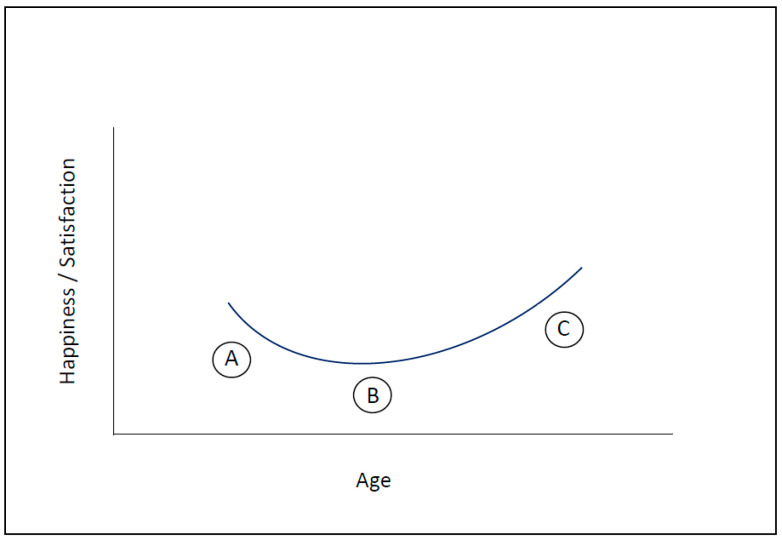Figure 3.
The Three Types of Motivation and Reward (“Happiness ABC”)—Predominance in the Course of Life. In the model, the different types of motivation (ABC—as outlined) predominate in a sequence that follows neurobiological (e.g., development, generativity) and biochemical (e.g., neurotransmitter metabolism) trajectories. Embedded is a movement from “me” to “we”, i.e., individual transcendence over the life span, as well as a transformation from momentary or more instable, fluctuating happiness (c.f., peak moments)—predominant in the young—to more stable or persistent satisfaction levels (c.f., contentedness) in the elderly; this includes becoming more independent of outer/external conditions in favor of internal motives (for further explanations, information: see text).

